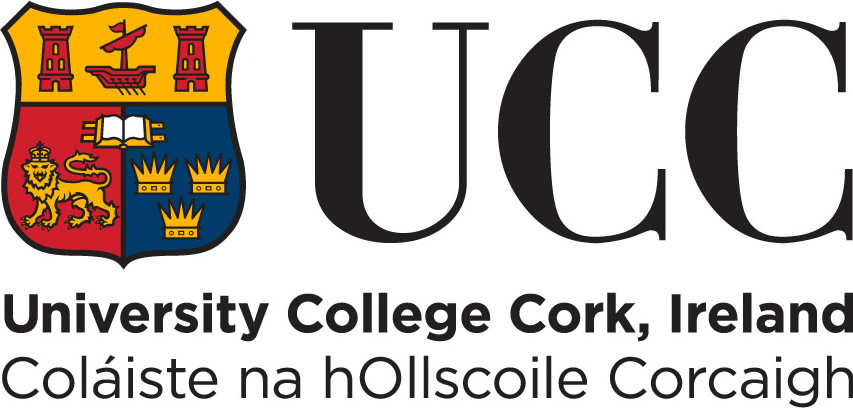Women, Feminism and Italian Cinema: Archives from a Film Culture, by Dalila Missero. Edinburgh University Press, 2021, 200 pp.
Francesco Sticchi
[PDF]
Review
Nietzsche argued that there are three types of history: monumental, antiquarian, and critical (67). The first kind exists to celebrate events and figures; to define and use symbols and icons of collective memory as reference points to build and reinforce ideas of communities, nations, populations or connected artistic heritage. Antiquarian historians, on the other hand, collect; they look everywhere to find new sources and elements to be carefully categorised and archived, avoiding the neglect of even the apparently most insignificant historical debris, which stay preserved for the purpose of future researches. Critical histories, finally, exist to undermine the stabilities of canons, of assured narratives, and to reframe perspectives with the purpose of highlighting how the vitality of the discipline depends on recognising the multiple and, at times, conflicting positions within it. Even though every proper historical work is affected, to some extent, by each of these three tensions, Women, Feminism and Italian Cinema: Archives from a Film Culture by Dalila Missero is certainly most subject to the third category by a large margin. By carefully looking at neglected histories of women’s cinema in the Italian context, with a particular attention to the responses and production of material-and counter-planning Nicole Cox and Silvia Federici would argue (1)-on the side of feminist political organisations. This historical reconstruction, therefore, manages, on the one hand, to offer insights and invaluable information on mistreated elaborations shaped, shared, and carried out by female audiences; on the other hand, this approach aims to reveal and discuss feminist cinema as a dialoguing and opposing force continuously challenging mainstream languages, trends, opinions on authorship and alleged images of homogeneous national productions. Indeed, one of the main theses that emerges as a paramount and effectively delivered standpoint of the text is that, on various levels, women, queer counter-publics, and most diverse feminist sensibilities and political positions have always been there reacting, responding and creating. Against assumed roles and ideologies concerning women’s roles on and away from the silver screen, cinema has always been a battlefield affected by conflicting political aspirations and desires.
The methodologies and theoretical framework of New Cinema History, then, are the chosen toolkit used to account for the multi-positionality of women across several decades of the twentieth century. This work, on the basis of its theoretical foundations, deploys extra-textual analyses, investigation of exhibition and circulation practices and of ideological discourses featured in the larger media ecosystem of a specific historical context. Furthermore, the text highlights the contribution of key figures and movements at a local and national level. Postcolonial and gender approaches are intersectionally blended in order to comment upon the career of icons such as Ines Pellegrini (Chapter 7), whose work becomes an instrument to provide insights upon widespread orientalism and colonialist tropes and discourses even at “high” levels of filmmaking culture. Similarly, thanks to incisive contextualisation and comparative examination, it is possible to observe the ways in which stereotypical assumptions and framing around sexuality informed stories and characters even in the circle of left-wing cinema of the 1960s and 1970s (with references to the work of directors such as Elio Petri or Marco Ferreri). Missero argues, in fact, how under the guise of satirising middle-classes behaviours, the advent of consumerism and related new sexual taboos in post-war 50s and 60s Italy, these filmmakers were often reproducing and reinforcing, at least, in part, very traditional ideas about alleged Italian masculinity (77-80).
The book is organised as a collection of essays and case studies (divided into three main sections), which are strongly interconnected through an overarching desire to reconstruct and problematise the lineage of Italian feminist film history. We encounter important figures both in terms of production, creative work and collection of archival material. Through the career path of film producer Mara Blasetti (daughter of the famous director Alessandro), we have an incisive reconstruction of the sexism affecting the cinema environment and of the challenges and constant sidelining she, as an emblematic figure of gendered power relations, had to face. Interestingly, this also allows us to appreciate how particular roles in the filmmaking assembly line were categorised in accordance with identity codifications, implying, because of that, a very strict chain of command. If, on one hand, it is possible to notice how these power relations informed a categorisation of the female workforce in the film industry in mostly secretarial, or subordinate, jobs, it is always fundamental, as Missero shows, to not underestimate the impact and influence of this large and nuanced social category (109-12). Indeed, the impact of women’s labour and role on issues of authorship and in the definition of national cinema is, again, another field of renewed historical analyses and discussions.
In line with this problematising strategy, Adriana Monti’s archive (the subject of the last chapter of the book) is discussed and used as an invaluable source of insight and information, exactly for the purpose of building a “counter-history” centred on feminist publics and on the reconstruction of the evolution of various movements’ positions and debates. Concurrently, this section works as a perfect point of contrast against the institutional neglect described in the initial chapters of the book. The emergence of women-related discussions, reviews and accounts of cinema-going experiences, even the appearance of specialised magazines, in fact, did not, as remarked by the author, register any change in attitudes when it came to decision-making processes or innovations in popular culture. Chapters Four and Five provide readers with detailed information about differences and similarities between female and queer spectatorships and assess the peculiarity of Italian protests and debates about pornography. Missero contends that archival material demonstrates the difference of national mobilisations and campaigns (compared to those taking place in the US at the time) in tackling sexualisation and pornographic productions as symptomatic of wider mechanisms of exploitation of female affective labour. In this sense, through other sections of the text, we find out that-against a general lack of attention to mobilisations and analyses-feminist film festivals and autonomous organising provided an alternative route for the definition of transformative publics and creative strategies.
Reconstructing the mistreated or ignored impact of Italian feminist cinema, at the same time, is pursued with the clear intention of not falling into the easy trap of nostalgia for past insurrections and revolutions against a present of apparent exhausted futures (as Mark Fisher has put it, 2-5). Confronting the tensions that emerged with the production of films such as Federico Fellini’s City of Women (La città delle donne, 1980), in fact, allows Missero to move beyond the diagnosis of the misogynistic tropes and discourses featured in the work of one of the most revered auteurs of Italian cinema at the international level. Through the historical account presented by Missero, the film is examined as a symptom of the transformations in mainstream culture and political organising of those years; this approach allows us to understand and assess the contextual divisions characterising Italian feminism of the time and some of the impasses and splits that would affect the movements (presenting heterogeneous concerns and focuses) in the years to come. The depoliticisation often associated with the diminishing propulsive energy coming with this turn does not stop the author and the reader considering the still inspiring productions carried out by collective groups such as the Arcobaleno Cooperative or the Collettivo Femminista Cinema.
These militant filmmakers’ associations, among many others, showed, notwithstanding the marginalisation and the lack of proper attention and/or support in mainstream and arthouse sectors of Italian filmmaking, on the one hand, a great sensibility in responding and actively participating in the definition of changing artistic trends and tastes. At the same time, they constituted an example of valid alternative creative and productive practices, which allowed the traps of professionalism (and glass-ceiling liberal approaches one could add) and the related traditional hetero-patriarchal division of roles mentioned earlier to be defied. The short life of these experiences, the author remarks, shows the need to avoid a dry celebration of the past and the desire to think about feminist filmmaking practices in renewed forms in order to tackle more precisely situated dynamics of contemporaneity. At the same time, the capacity of groups such as the Arcobaleno Cooperative to intersectionally blend the analysis of labour practices and the focus on gendered relations, and to connect creative work with considerations on community building, remain solid coordinates to plan and implement feminist and more inclusive (or transfeminist) filmmaking strategies in the present.
As set out in the introduction, one of the main objectives of the text is related to a revised notion of care against the pervasive carelessness of the present (8). Notwithstanding the ambiguity and complexity of this notion, which, of course, bring us to reflect upon canonical gendered labour and affective work (women’s still unrecognised or undervalued reproductive function), care has come to the forefront of political theory and analyses to point out the nature of current political crises. The lack of care seems to define the dynamics of our everyday lives: from eroding living standards to the attack on hard-won reproductive rights, via the increasing and widespread sense of vulnerability felt on countless social and personal levels and to various degrees, this sense of insecurity pervades our ecologies. Starting from this point, it is possible to re-signify the notion of care with the purpose of imagining new modes of being together, allowing new forms of sociality and countercultures to emerge.
This is exactly the direction to which the book moves: by walking through the conflicted history of Italian cinema audiences it allows us to rethink past and present and to imagine ways to relate to that complex “structure of feelings” (to quote Raymond Williams) that screen culture configures. This approach, therefore, values and cherishes the multi-positionality of women, the differences across transfeminist movements and organisations (with references to wave-related sensibilities) and the manifold mode of engagement with media phenomena as sources for continuous transformations. It is a critical history which evokes a need for academic practices based on collaboration, cooperation and access, and that renounces romantic idealisations of the past in favour of new futures to be built together.
References
1. Cox, Nicole, and Silvia Federici. Counter-planning from the Kitchen. New York Wages for Housework Committee, 1975.
2. Fellini, Federico, director. City of Women [La città delle donne]. 1980.
3. Fisher, Mark. Ghosts of My Life: Writings on Depression, Hauntology and Lost Futures. Zero Books, 2014.
4. Nietzsche, Friedrich. Untimely Meditations. Edited by D. Breazeale, translated by R. J. Hollingdale. Cambridge UP, 1997, pp. 57-124.
5. Williams, Raymond. “Structures of Feeling.” Marxism and Literature, Oxford UP, 1978, pp. 128-35.
Suggested Citation
Sticchi, Francesco. “Women, Feminism and Italian Cinema: Archives from a Film Culture, by Dalila Missero.” Alphaville: Journal of Film and Screen Media, no. 25, 2023, pp. 170-173. DOI: https://doi.org/10.33178/alpha.25.17
Francesco Sticchi is a Lecturer in Film Studies at Oxford Brookes University, UK. He is the author of the monograph Mapping Precarity in Contemporary Cinema and Television: Chronotopes of Anxiety, Depression, Expulsion/Extinction (Palgrave Macmillan, 2021) and works in the field of film-philosophy and ecology of media. He is currently working on a monograph on contemporary sci-fi/horror and cinema and television and is cofounder of Cinematic Precarity Research Network.









